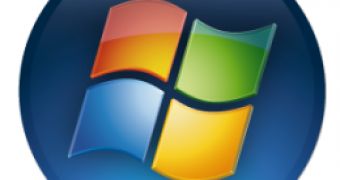

- #Slmgr rearm reset software#
- #Slmgr rearm reset trial#
- #Slmgr rearm reset password#
- #Slmgr rearm reset license#
This WPA vulnerability is related to a WPA registry key which contains the ‘Last Rearm Time’. There is no limit to the number of times that the rearm count can be reset, meaning that a user could theoretically run an unlicensed copy of Windows 7 forever, without the need for proper activation, and without applying any activation hacks. Through a Windows Product Activation (WPA) vulnerability that Microsoft introduced in Windows 7, it is possible to reset the remaining rearm count back to 4.
#Slmgr rearm reset software#
Users will then be subjected to certain annoyances such as black desktop background, repetitive notification messages stating that this copy of Windows is illegal or counterfeited, and a reminder to register the software at login. When a user uses up all three rearms available rearms, the only option left is to enter a genuine product key to activate Windows 7, or leave the operating system in a crippled, non-genuine state.

When this grace period expires, users can rearm Windows 7 for an additional 30 days, and do this up to 3 times, effectively allowing the OS to run legally for 120 days without a genuine product key.
#Slmgr rearm reset license#
If you have any questions, please let me know in the comment session.After installing Windows 7, and before activation, the operating system will run in an Initial Grace Period license status for 30 days.

Show the expiry date of the current license or indicate whether activation is permanent.
#Slmgr rearm reset trial#
Uninstall the currently installed Windows product key and return the license status back to a trial state. Set the port on which the KMS host listens for client activation requests (default TCP port is 1688).Įnable DNS publishing by the KMS host (default). Set the KMS priority to normal (default). Sets the interval in minutes for unactivated clients to attempt KMS connection. This blocks the use of DNS priority and weight after the initial discovery of a working KMS host. Set the Volume Licensing KMS server and/or the port used for KMS activation.Įnable KMS host caching (enabled by default). Use /rearm-app to specify an app, or /rearm-sku for a specific sku. Reset the evaluation period/licensing status and activation state of the computer. Replaces the current product key if present. Similar to /dli but more detailed.ĭisplay Installation ID for offline activation.Ĭhange the Windows product key. The username of an administrator account on the remote machine.Īctivate Windows license and product key against Microsoft’s server.Īctivate the product with a user-provided Confirmation_ID.Ĭlear the name of KMS server used to default and port to default.ĭelete the Windows product key from Windows Registry.ĭisplay the current license information with activation status and partial product key.ĭisplay additional license information. Defaults to the local machine if omitted. I am certainly not sure if the image above did a good in explaining these commands, kindly see the following table below for more slmgr syntax.
#Slmgr rearm reset password#
slmgr.vbs ] slmgr.vbs computername username password /option The following figure below describes the syntax of the slmgr.vbs script. When you type these statements, omit the brackets and replace the placeholders with your values. The square brackets enclose optional arguments, and angle brackets enclose placeholders. You can also remotely administer computers on your network by using the following syntax below. Perform slmgr (Windows Activation) actions on remote devices


 0 kommentar(er)
0 kommentar(er)
